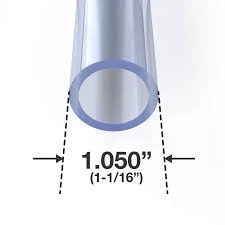Dec . 03, 2024 17:24 Back to list
pvc pipe garden irrigation system
PVC Pipe Garden Irrigation System An Efficient Solution for Gardening
In the realm of gardening, ensuring that plants receive adequate hydration is often a task that requires careful planning and execution. Traditional watering methods, such as hoses and manual watering cans, can be time-consuming and sometimes inefficient. However, an increasingly popular alternative is the PVC pipe garden irrigation system, which offers numerous benefits for both amateur and professional gardeners alike.
Understanding PVC and Its Advantages
Polyvinyl Chloride, commonly known as PVC, is a type of plastic that is widely used in various applications, including construction, plumbing, and irrigation. Its popularity in irrigation systems stems from its durability, resistance to corrosion, lightweight nature, and affordability. Unlike metal pipes that can rust and degrade over time, PVC pipes can withstand harsh weather conditions and remain functional for years.
One significant advantage of using a PVC pipe irrigation system is its ability to deliver water directly to the root zone of plants. This targeted approach minimizes water waste, as it reduces evaporation and runoff. Efficient water delivery not only conserves resources but also promotes healthier plant growth by ensuring that the plants receive the right amount of moisture consistently.
Designing a PVC Pipe Irrigation System
Designing a PVC pipe irrigation system can be a straightforward process, even for those with limited gardening experience. The first step is to assess the garden layout and determine the water needs of different plants. This will help in deciding the number of pipes, the placements, and the overall design of the irrigation system.
A typical PVC irrigation system consists of main supply pipes, lateral pipes, and emitters or sprinklers. The main supply pipes carry water from a source, such as a tap or rainwater collection tank, to the garden area. Lateral pipes branch off from the supply lines, extending to various sections of the garden. Emitters can be strategically placed along these lateral pipes to ensure even water distribution.
When planning the system, it is essential to consider the pressure requirements. PVC pipes come in various diameters and pressure ratings, so choosing the right size will facilitate adequate water flow while minimizing potential clogs.
pvc pipe garden irrigation system

Installation Process
The installation of a PVC pipe irrigation system generally involves digging trenches for the pipes, cutting the pipes to the desired lengths, and connecting them with appropriate fittings and connectors. PVC cement is often used to join pipe sections securely, ensuring a watertight seal.
After the installation, it’s critical to conduct a test run of the system. Observing the water flow and coverage will reveal any issues such as leaks or uneven distribution. Adjustments can be made by repositioning emitters or adding additional lateral lines as needed.
Maintenance and Troubleshooting
One of the key benefits of PVC irrigation systems is low maintenance. Regular checks for leaks, blockages, and ensuring emitters are functioning correctly can keep the system running smoothly. Flushing the system periodically can help remove any debris that may accumulate within the pipes.
In case of clogs, which can occasionally occur, simply remove the affected emitter and clean it thoroughly. Ensuring that the water source is free of debris can significantly reduce instances of blockage.
Conclusion
A PVC pipe garden irrigation system is an effective and efficient way to ensure that your plants thrive. By providing direct water access to the root zones and minimizing waste, these systems are not only beneficial for plant health but also for the environment. With a straightforward installation and low maintenance requirements, this irrigation solution is perfect for anyone looking to enhance their gardening experience. Whether in a small backyard garden or a larger agricultural setup, a PVC pipe irrigation system can make a positive impact on both productivity and sustainability.
-
High-Quality PPR Pipes and Fittings Durable ERA PPR & PVC PPR Solutions
NewsJul.08,2025
-
Black HDPE Cutting Board - Durable, Non-Porous & Food Safe HDPE Plastic Cutting Board
NewsJul.08,2025
-
High-Quality CPVC Panel Durable HDPE & PVC Panels Supplier
NewsJul.08,2025
-
Double PE Welding Rod Supplier - High Strength, Durable & Versatile Welding Solutions
NewsJul.07,2025
-
High-Quality PVC-O Pipe Supplier Durable 75mm PVC Pipe & Connections Leading PVC Pipe Company
NewsJul.07,2025
-
HDPE Drainage Pipe Supplier – Durable & Corrosion-Resistant Solutions
NewsJul.06,2025

